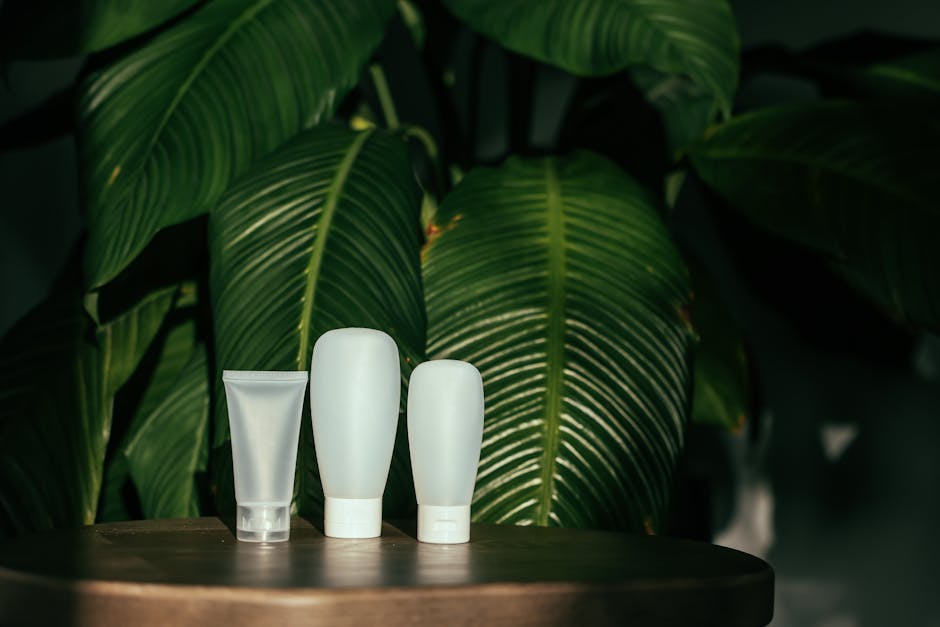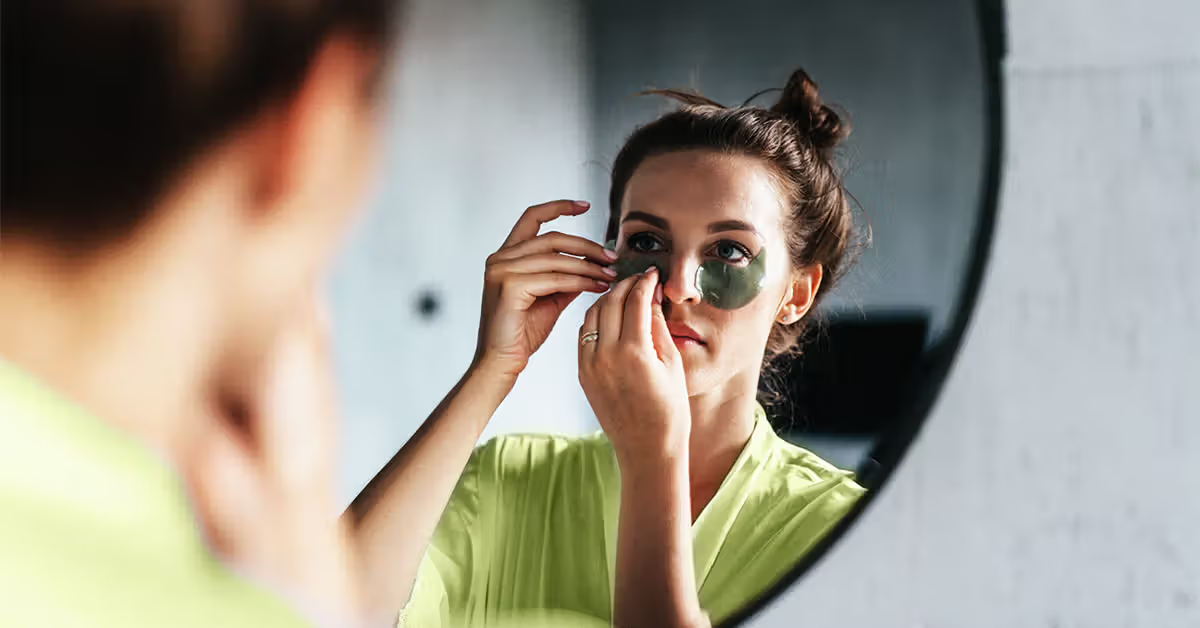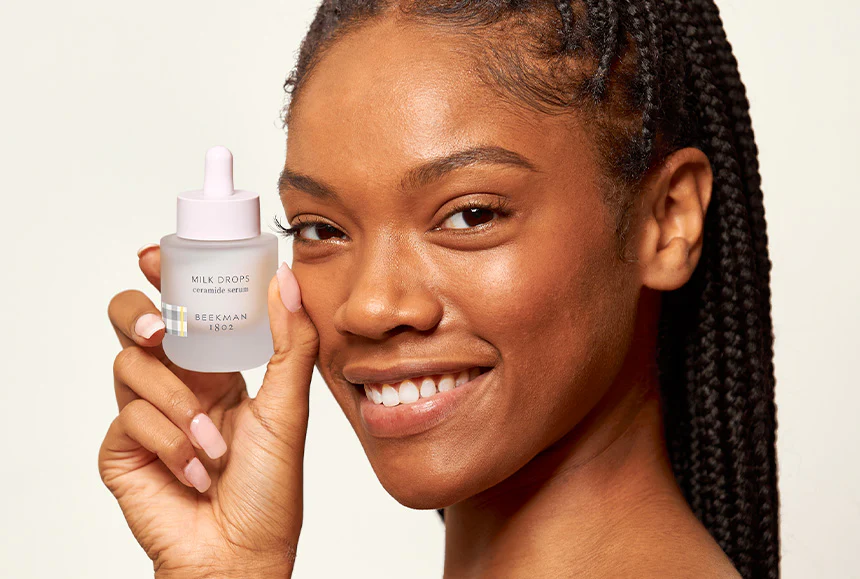The Truth About Affordable Organic Skincare
Affordable organic skincare is not a myth – you can nourish your skin naturally without emptying your wallet. If you’re looking for budget-friendly organic options, here are the best picks under $30 in 2025:
- Natural Glow – Multi-purpose products starting at $9
- Pure Essence – 100% vegan formulas between $10-$20
- Earth Botanics – High-quality items like their Coffee Bean Eye Cream ($16-$29)
- Circular Beauty – Sustainable products with 25,000+ 5-star reviews
- Herbal Essence – Classic organic formulations starting around $10
Finding quality organic skincare that won’t break the bank can feel like searching for a needle in a haystack. Between confusing labels, greenwashing, and premium price tags, many people assume that “organic” automatically means “expensive.”
The truth is that effective organic skincare exists at affordable price points. As more brands enter the market with transparent practices and ethical formulations, consumers now have more budget-friendly options than ever before in 2025.
What makes this challenging is that truly organic products often cost more to produce. Natural preservatives and high-quality plant-based ingredients typically come with higher manufacturing costs than synthetic alternatives. However, many brands have found ways to offer these benefits at accessible prices.
“Switching to non-toxic skincare doesn’t mean you have to spend a fortune— affordable non-toxic products do exist!”
The key is knowing what to look for. Certifications like USDA Organic, MADE SAFE, and Leaping Bunny can help verify claims, while understanding ingredient lists empowers you to make informed choices. Many affordable organic brands focus on simple, effective formulations without fancy packaging or marketing campaigns, passing those savings to consumers.
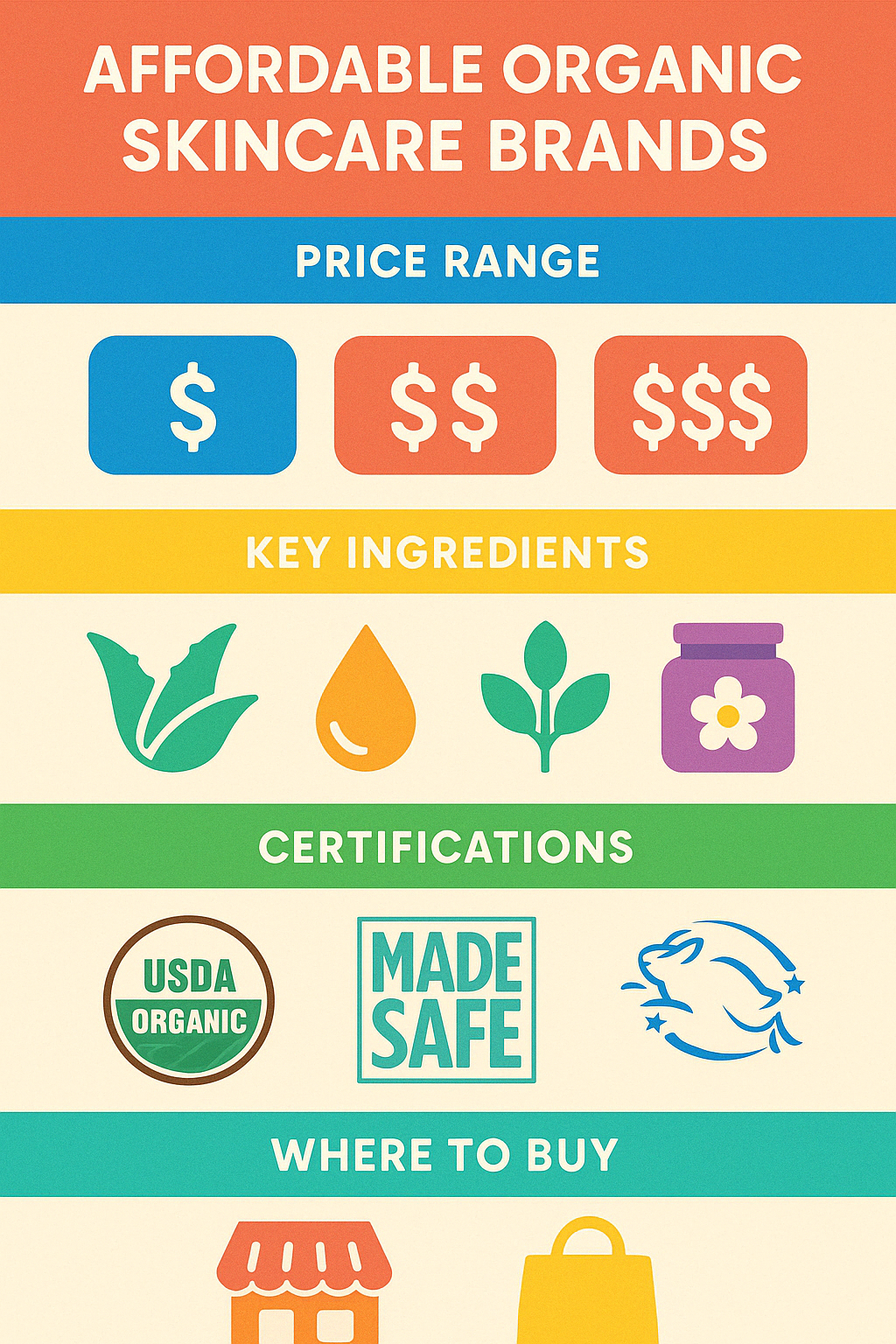
Why Affordable Organic Skincare Matters
Your skin is your largest organ, absorbing much of what you put on it. This simple fact makes affordable organic skincare not just a beauty choice, but a health decision that impacts both your wellbeing and our planet.
Health Benefits Beyond the Surface
Think about it: conventional skincare often contains ingredients you might struggle to pronounce—parabens, phthalates, synthetic fragrances, and formaldehyde-releasing preservatives. These aren’t just fancy scientific terms; they’re chemicals linked to real health concerns ranging from minor skin irritation to more serious issues like hormonal disruption.
When Sarah Miller, a skincare enthusiast from our community, switched to natural products, her experience spoke volumes: “Since beginning to use organic serums, I feel younger. My skin feels well-hydrated and happy…” This isn’t unusual. Many people notice their skin becomes more balanced and healthier when they transition to organic formulations.
What makes organic skincare different? Instead of harsh chemicals, these products typically contain plant-based ingredients rich in vitamins, minerals, and antioxidants. These natural components work in harmony with your skin’s biology rather than fighting against it, often leading to better long-term results without the potential side effects.
Scientific research continues to support the benefits of natural ingredients in skincare, confirming what many users have experienced firsthand—that nature often provides effective solutions without unwanted consequences.
Environmental Impact
The beauty of affordable organic skincare extends well beyond your bathroom mirror. When you wash conventional products down the drain, those chemicals don’t just disappear—they enter our water systems and can harm aquatic life. Additionally, the production of synthetic ingredients often involves environmentally damaging practices.
In contrast, organic skincare brands typically prioritize sustainability at every step:
They source ingredients responsibly, use eco-friendly manufacturing processes, choose recyclable or biodegradable packaging, and work to reduce their carbon footprints.
Take Circular Beauty as an example—they’ve won over 500,000 happy customers by creating products from upcycled ingredients that would otherwise go to waste. Their success proves that being kind to the planet doesn’t have to come with a luxury price tag.
The Non-Toxic Difference
“Paying less usually means compromising a bit on formulations or the quality of ingredients. But not today!” says Emma Johnson, an organic beauty expert at Beyond Beauty Lab. Her words capture the exciting shift happening in the market—affordable organic skincare no longer means settling for less effective products.
This matters because our skin absorbs a significant portion of what we apply to it. This absorption makes choosing non-toxic, organic ingredients especially important for products that stay on your skin for hours, like moisturizers and serums.
The growing availability of budget-friendly organic options means more people can make healthier choices without financial strain. As one reviewer noted about an affordable organic moisturizer from our recommended collection: “After 1 day of using it I noticed improvements in the way my skin feels…”
When you choose affordable organic skincare, you’re not just being kind to your wallet—you’re making a choice that benefits your health and the environment. It’s a small daily decision that creates ripples of positive impact far beyond your skincare routine.
How to Find Affordable Organic Skincare Products
Finding genuine affordable organic skincare is a bit like treasure hunting—it takes some knowledge and detective skills, but the rewards are absolutely worth it. With a smart approach, you can build a non-toxic skincare routine that loves your skin and respects your wallet.
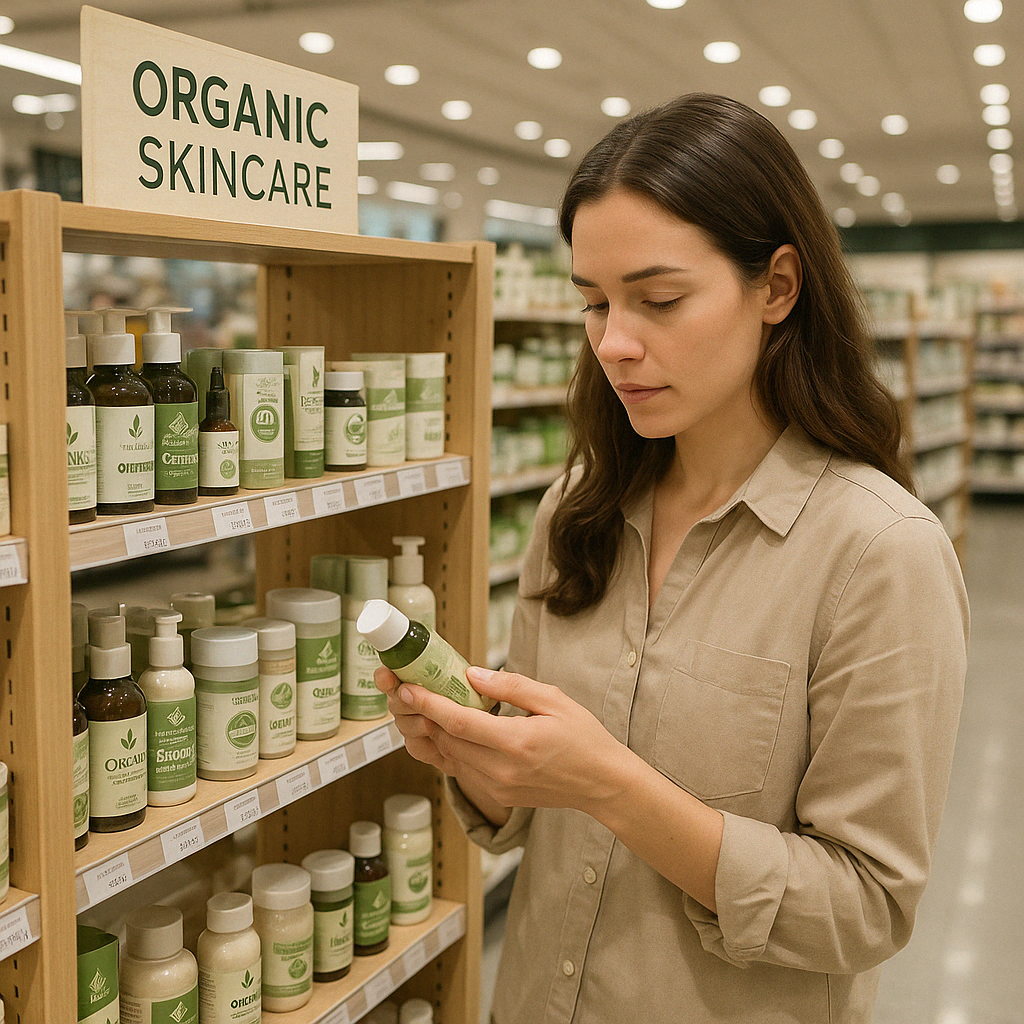
Identifying Truly Affordable Organic Skincare Products
Let’s face it—the beauty industry loves its buzzwords. “Greenwashing” (making products seem more natural than they actually are) is everywhere. But don’t worry, I’ve got your back with some practical tips to spot the real deals.
When shopping, legitimate certifications are your best friends. Look for trustworthy third-party verifications like USDA Organic (requires at least 95% organic ingredients), COSMOS Organic (the European gold standard), Leaping Bunny (confirms no animal testing), EWG Verified (free from concerning chemicals), or MADE SAFE (certified without known harmful ingredients).
These certifications aren’t just fancy logos—they’re promises backed by standards. As Devon S., a happy customer, shared about her certified organic cream: “I love the Golden Hour Recovery Cream from my favorite brand! After 1 day of using it I noticed improvements in the way my skin feels…” Real certifications often lead to real results.
Smart shopping also means looking beyond the sticker price. A $15 facial oil that lasts three months is actually a better deal than a $10 product that’s gone in three weeks. Many affordable organic skincare brands offer concentrated formulas where just a tiny drop does the job. Try comparing cost-per-ounce instead of just the upfront price—you might be surprised at what’s actually affordable in the long run!
Be especially careful with vague marketing terms. Words like “natural,” “clean,” and “green” have no regulated definitions. Without certifications or transparent ingredient lists to back them up, these claims can be about as meaningful as “inspired by nature” (which could mean almost anything). As one beauty expert at Beyond Beauty Lab colorfully put it, many products in the ‘clean beauty’ aisle are dressed in green packaging but hiding conventional formulas inside.
Reading Ingredient Lists Carefully
Becoming an ingredient detective is perhaps your most valuable skill when hunting for affordable organic skincare. It might seem overwhelming at first, but once you know what to look for, it gets much easier.
First, know what to avoid. Parabens (like methylparaben and propylparaben) are hormone disruptors commonly found in moisturizers and cleansers. Phthalates lurk in fragranced products and can also mess with hormones. Synthetic fragrances—often listed simply as “fragrance” or “parfum”—can contain dozens of undisclosed chemicals and common allergens.
Also watch out for formaldehyde-releasing preservatives (they’re carcinogenic), sulfates like SLS and SLES (they can irritate skin), and petrochemicals like mineral oil (environmental concerns plus they can trap toxins against your skin).
On the flip side, accept affordable, effective organic ingredients. Plant oils like jojoba, sunflower, olive, and coconut deliver amazing benefits without breaking the bank. Natural butters (shea, cocoa, mango) provide rich moisture. Botanical extracts such as aloe vera, chamomile, and green tea offer soothing properties. For preservation, look for natural options like vitamin E and rosemary extract.
As Olivia Chen, a Contributing Editor at Beyond Beauty Lab, noted about her favorite brand: “I’m impressed with the quality of organic formulas. Everything is so highly concentrated and effective…” This highlights how good organic formulations deliver powerful results through quality natural ingredients.
Ingredients appear in descending order by concentration. The first five ingredients typically make up most of the product. If water is first (which is normal), pay attention to what follows to judge quality.
Shopping Smart for Affordable Organic Skincare
Being strategic about your shopping habits can help you build an affordable organic skincare routine without financial stress.
Multi-use products are budget heroes. An oil cleanser that removes makeup while cleansing saves you from buying two separate products. Versatile balms that work for lips, cuticles, and dry patches give you triple the value. Facial mists that both tone and hydrate stretch your dollar further while simplifying your routine.
Many organic brands offer subscription services with 10-15% discounts when you commit to regular deliveries. This approach works especially well for products you use consistently. Beauty subscription boxes can also be a cost-effective way to sample new products before investing in full sizes.
For products with long shelf lives, stock up during sales. Many affordable organic skincare brands offer bundle deals that significantly reduce the per-item cost. I’ve seen savings of up to 30% with smart bundling, especially during seasonal promotions in 2025.
“Who doesn’t love finding a great product at a steal?”
This feeling of finding high-quality organic skincare that respects your budget is what we live for at Beyond Beauty Lab. We’re dedicated to helping you experience this joy more often through our educational resources.
Don’t overlook online retailers with competitive pricing. Websites like health-focused marketplaces frequently offer organic skincare at lower prices than specialty stores. Many affordable brands also sell directly through their websites, cutting out retail markups that can inflate prices by 40% or more.
With a bit of knowledge and some smart shopping habits, genuine affordable organic skincare is absolutely within reach. Your skin—and your wallet—will thank you for making the effort to find products that are good for both.
Top Affordable Organic Skincare Ingredients to Look For
The secret to effective yet affordable organic skincare often lies in simple, potent ingredients that nature provides. These powerhouse components deliver impressive benefits without the hefty price tag of complex synthetic formulations.

Aloe Vera: The Soothing Affordable Organic Skincare Ingredient
If skincare ingredients were superheroes, aloe vera would definitely be wearing a cape. This succulent wonder contains over 75 potentially active compounds, including vitamins, minerals, enzymes, and amino acids that work magic on your skin.
When you apply aloe vera, it doesn’t just sit on top of your skin like many moisturizers. It actually penetrates deeper, delivering hydration where your skin needs it most. For those with irritated or sunburned skin, aloe’s natural anti-inflammatory properties can be a real lifesaver, quickly calming redness and soothing discomfort.
What makes aloe vera a star in the affordable organic skincare world is how accessible it is. You can find pure aloe vera gel for under $10 at most stores, and a little goes a long way. Many people even grow aloe plants at home for the freshest application possible!
As Rachel W., one of our verified reviewers, shared about an aloe-based product: “I am obsessed with Sunshine Serum! Packed with Hemp and Vitamin C, it absorbs quickly in my skin. I won’t go without this!” Her enthusiasm speaks volumes about how effective these simple, natural formulations can be.
Shea Butter: An Affordable Organic Skincare Staple
Long before fancy creams lined department store shelves, women in West Africa were using shea butter to protect and nourish their skin. This rich, creamy butter remains one of the most affordable yet effective organic ingredients available today.
The magic of shea butter lies in its rich composition of vitamins A, E, and F, along with essential fatty acids that create a moisture-sealing barrier without clogging pores. If your skin feels dry and tight, especially during winter months, shea butter creates a protective shield that keeps moisture locked in while still allowing your skin to breathe.
What’s particularly wonderful about shea butter is its versatility. You can use it straight from the jar as a rich moisturizer, or look for it in formulations like those from Acure, which incorporate shea butter while keeping prices wallet-friendly. A small jar typically costs between $5-$15 and can last for months, making it incredibly economical for daily use.
Ella I. recently noted about an affordable shea butter product: “Love this combo shampoo & conditioner! It makes my hair literally feel like the moisture is being locked in. My hair looking and feeling amazing after just one use!” This versatility across both skin and hair care makes shea butter a true multitasking champion.
Jojoba Oil: Nature’s Sebum Mimicker
Here’s something fascinating about jojoba oil: it’s not actually an oil, but a liquid wax that closely resembles our skin’s natural sebum. This remarkable similarity means your skin recognizes it as “one of its own,” making jojoba one of the most harmonious ingredients you can apply.
For those with oily skin who might be hesitant to apply an oil, jojoba actually helps balance oil production rather than adding to it. And if you have dry skin, it provides just the right amount of nourishment without feeling heavy. This balancing act makes jojoba suitable for virtually all skin types.
A small bottle of organic jojoba oil costs around $8-$15 and has impressive staying power—it resists oxidation and can last up to two years without going rancid. You can use just a few drops as a standalone moisturizer or mix it into other products to boost their nourishing properties. This versatility makes it a smart addition to any affordable organic skincare routine.
Rosehip Oil: Affordable Vitamin C Source
Rosehip oil is like nature’s vitamin capsule for your skin. Pressed from the seeds of wild rose bushes, this golden oil packs an impressive nutrient profile that rivals many expensive serums.
What makes rosehip oil particularly special is its natural content of vitamin A (in the form of trans-retinoic acid) and vitamin C, two powerhouse ingredients that typically come with a hefty price tag in synthetic forms. These nutrients work together to brighten your complexion, support collagen production, and help fade those stubborn dark spots that seem to appear overnight.
A 1-ounce bottle of organic rosehip oil typically costs between $10-$20, making it a cost-effective alternative to synthetic vitamin C serums that can easily run $60 or more. Just a few drops patted onto damp skin can transform your complexion over time, proving that effective skincare doesn’t need to break the bank.
DIY Affordable Organic Skincare with Common Ingredients
Sometimes the most effective skincare solutions are sitting right in your kitchen pantry. Creating your own products is perhaps the most economical approach to affordable organic skincare, giving you complete control over what touches your skin.
Imagine treating yourself to a spa-like experience with a simple honey mask that costs pennies to make. Just mix a tablespoon of raw honey with a few drops of jojoba oil, apply to clean skin for 15-20 minutes, and rinse with warm water. Your skin will feel soft, hydrated, and nourished—all for about 50 cents!
For gentle exfoliation, ground oatmeal works wonders when combined with honey and a touch of olive oil. This combination gently removes dead skin cells without the harsh scratching of commercial scrubs, and costs less than 50 cents per use.
Even creating your own toner is surprisingly simple. Combining aloe vera gel with witch hazel and a few drops of rosehip oil creates a calming, balancing toner that costs about $1.50 to make and lasts for 1-2 weeks when refrigerated.
Beyond the cost savings, making your own products reduces packaging waste and allows you to customize formulations based on what your skin needs each day. As we often say at Beyond Beauty Lab, your skin’s needs change with the seasons, your hormonal cycles, and even your stress levels—DIY formulations let you adapt accordingly.
The beauty of these natural ingredients isn’t just their affordability—it’s their genuine effectiveness. When you choose simple, potent botanicals, you’re connecting with traditional wisdom that has nourished skin for generations, long before complicated 12-step routines became the norm. Your skin—and your wallet—will thank you for getting back to these nourishing basics.
Frequently Asked Questions about Affordable Organic Skincare
What are the benefits of using affordable organic skincare products?
When you choose affordable organic skincare, you’re doing something wonderful for both your skin and the planet. Think of it as a double win!
For your skin, organic products leave out potentially harmful ingredients like parabens, phthalates, and synthetic fragrances that might mess with your hormones or cause irritation. Instead, they’re packed with natural ingredients full of vitamins, minerals, and antioxidants that actually feed your skin what it needs.
Sarah Miller, one of our community members, put it perfectly: “Since beginning to use organic serums, I feel younger. My skin feels well-hydrated and happy…” That’s the beauty of quality organic formulas – they work with your skin rather than against it.
If you have sensitive skin, you’ll likely find organic products much gentler. Without all those harsh chemicals, there’s less chance of experiencing those frustrating allergic reactions or irritations. Your skin can finally breathe and heal naturally!
For our planet, choosing organic means supporting sustainable farming practices without those harmful pesticides and fertilizers. When you rinse off your organic face wash, those natural ingredients break down more easily in water systems. Many affordable organic brands also focus on local sourcing and eco-friendly manufacturing, which means a smaller carbon footprint.
The best part? You don’t have to empty your wallet to make these better choices. Affordable organic options make healthier skincare accessible to more people – because everyone deserves to care for their skin without worrying about harmful chemicals or breaking the bank.
How can I identify truly affordable organic skincare products?
Finding genuine affordable organic skincare is a bit like becoming a beauty detective – but I promise it’s easier than it sounds!
First, look for those trustworthy certifications. Labels like USDA Organic, COSMOS, or EWG Verified aren’t just pretty logos – they’re proof that products meet specific standards for organic content and safety. These certifications do the hard work of verification for you.
Next, flip that bottle over and check the ingredient list. A good rule of thumb: the shorter and more recognizable the list, the better. Watch out for red flags like ingredients ending in “-paraben,” the mysterious “fragrance” or “parfum” (which can hide dozens of chemicals), PEGs, ingredients with “eth” in their names, and silicones like dimethicone.
Do a little homework on the brand, too. Transparent companies love sharing their sourcing stories and how they make their products. Brands truly committed to affordability often explain exactly how they keep costs down while maintaining quality.
Here’s a smart shopping tip: calculate the cost per ounce or per use. That $25 product might actually be more economical than the $15 one if it lasts three times as long! This simple math helps you determine true affordability beyond the sticker price.
Finally, don’t skip the reviews – especially from people with skin concerns similar to yours. One verified buyer simply stated, “I love this lotion!” When backed by verification systems and detailed experiences from other customers, these straightforward endorsements can help guide your purchasing decisions.
With these detective skills in your beauty toolkit, you’ll be finding authentic affordable organic skincare in no time!
Are affordable organic skincare products as effective as expensive ones?
Let’s bust a common beauty myth right now: price doesn’t always equal effectiveness. In fact, many affordable organic skincare products perform just as well as their luxury counterparts – sometimes even better!
Many affordable organic brands focus on what truly matters: high concentrations of active ingredients rather than fancy packaging or massive marketing campaigns. As Olivia Chen from Beyond Beauty Lab noted: “Everything is so highly concentrated and effective…” These brands understand that results speak louder than pretty bottles.
Here’s something beauty insiders know: effective skincare often comes down to just a few key ingredients working well together. Many affordable organic brands excel by creating simple, potent formulations instead of complicated proprietary blends with ingredients you can’t pronounce.
The quality of ingredients matters far more than the brand name on the label. A well-formulated vitamin C serum from an affordable brand can deliver the same brightening results as one costing five times more. Many affordable brands source excellent quality ingredients – they just don’t charge you extra for their marketing budget.
Perhaps most importantly, skincare is deeply personal. The most expensive cream in the world won’t work magic if it’s wrong for your skin type. An affordable organic product that matches your specific needs will likely give you better results than a luxury product that doesn’t.
Devon S. shared this about an affordable organic cream: “After 1 day of using it I noticed improvements in the way my skin feels…” This real-world experience highlights what we at Beyond Beauty Lab have always believed – results, not price tags, are what truly matter in skincare.
Many educated skincare enthusiasts achieve excellent results with moderately priced organic products once they understand which ingredients their skin needs. The secret is knowing what works for you and finding products that deliver those benefits, regardless of what you pay.
How can I transition to an affordable organic skincare routine?
Switching to an affordable organic skincare routine doesn’t have to happen overnight. In fact, a gradual approach is often better for both your skin and your wallet!
Start with your everyday essentials – your cleanser and moisturizer. Since you use these products daily, replacing them first makes the biggest impact on reducing your chemical exposure. Plus, these basics form the foundation of any good skincare routine.
Think about which products stay on your skin the longest. Your leave-on products like moisturizers and serums should be prioritized over wash-off products like cleansers, since they have more time to be absorbed into your skin.
Unless you’re having negative reactions to your current products, use them up before replacing them. This approach reduces waste and gives you plenty of time to research organic alternatives that fit your budget. Your wallet and the planet will thank you!
Introduce just one new product at a time, allowing about two weeks between additions. This patient approach helps you identify how your skin responds to each new product. If you experience irritation, you’ll know exactly which product caused it.
Look for multitasking heroes in the affordable organic world. A good facial oil might moisturize, nourish, and balance your skin all at once, eliminating the need for multiple specialized products. These versatile products save both money and bathroom shelf space.
Your skin’s needs change with the seasons. Instead of buying numerous specialized products, consider having a lighter moisturizer for summer and a richer one for winter. This seasonal adjustment approach keeps your routine both effective and economical.
One happy customer shared: “Maria absolutely loved the products in the trial skincare set, which included a moisturizer, serum, toner, cleanser, and mask.” Starting with a trial or sample set can be a wonderful way to experience multiple products from a new brand without a major investment.
What ingredients should I avoid in skincare products?
When you’re seeking affordable organic skincare, knowing what to avoid is just as important as knowing what to look for. Think of this as your “not-in-my-skincare” cheat sheet for 2025!
Parabens (look for methylparaben, propylparaben) are preservatives linked to hormone disruption. They’re common in conventional products but completely unnecessary when better alternatives exist.
Phthalates often hide behind the innocent-looking word “fragrance” on labels. These chemicals help fragrances last longer but may affect your hormonal balance. Brands that list specific essential oils instead of “fragrance” are usually a safer bet.
Formaldehyde-releasing preservatives like DMDM hydantoin and imidazolidinyl urea are potential carcinogens. They slowly release small amounts of formaldehyde to prevent microbial growth – definitely not something you want on your skin!
Synthetic fragrances can contain hundreds of undisclosed chemicals, many of which are common allergens. Companies aren’t required to disclose these ingredients, making “fragrance” a convenient hiding place for questionable substances.
Petrochemicals like mineral oil and petrolatum come from petroleum and may contain contaminants. While they create a barrier on skin, they don’t provide actual nourishment and can trap debris.
Sulfates (sodium lauryl sulfate, sodium laureth sulfate) are harsh detergents that strip away your skin’s natural oils. They create that satisfying foam in cleansers but often leave skin feeling tight and dry.
Silicones (dimethicone, cyclomethicone) create a smooth feeling but actually form an artificial barrier that can trap debris and prevent skin from breathing properly.
PEGs (polyethylene glycols) and ethoxylated ingredients (anything with “eth” in the name) may contain harmful manufacturing byproducts like ethylene oxide and 1,4-dioxane.
As one skincare expert at Beyond Beauty Lab noted: “Many conventional beauty products contain ingredients such as parabens, sulfates, and undisclosed fragrances that may pose health risks.” Understanding these ingredients gives you the power to make smarter choices for your skin’s long-term health.

Conclusion: Embracing Affordable Organic Skincare

The quest for affordable organic skincare doesn’t need to leave you confused in beauty aisles or wincing at checkout. As we’ve explored together, quality and affordability aren’t mutually exclusive in organic skincare in 2025.
Think about what we’ve learned on this journey. Brands like Natural Glow, Pure Essence, and Earth Botanics are proving every day that effective, clean formulations don’t require luxury pricing. Their products deliver results without the premium markup that often comes with fancy packaging or massive marketing campaigns.
Becoming your own label detective is perhaps the most valuable skill you’ll develop. When you can confidently scan an ingredient list and understand what you’re seeing, you gain the power to identify genuine value. That moisturizer with five simple, potent ingredients might serve your skin better than one with a paragraph-long ingredient list full of fillers and questionable additives.
Those certifications we discussed? They’re your shorthand in a confusing marketplace. When you spot USDA Organic, MADE SAFE, or Leaping Bunny logos, you can breathe easier knowing independent experts have verified what’s in the bottle. These third-party stamps of approval help cut through the noise of marketing claims and buzzwords.
I’ve noticed in my own skincare journey that the simplest formulations often deliver the most impressive results. Many effective organic products contain relatively few ingredients—but they’re the right ingredients at effective concentrations. This “less is more” approach not only benefits your skin but typically comes with a gentler price tag too.
Remember those DIY options we explored? They’re not just fun weekend projects—they’re legitimate ways to extend your skincare budget. That jar of raw honey in your pantry might be the perfect face mask for your sensitive skin. The organic coconut oil you cook with could double as an effective makeup remover. These kitchen-to-bathroom crossovers create serious savings while delivering pure ingredients.
At Beyond Beauty Lab, we firmly believe that everyone deserves access to skincare that supports both personal health and environmental sustainability. The growing availability of affordable organic skincare means more people can align their daily routines with their values without stretching their budgets to the breaking point.
One of our community members recently shared something that resonated deeply: “Beauty doesn’t get cleaner than this.” Her words capture exactly what makes affordable organic skincare so valuable—it delivers results while honoring your health, your budget, and our shared planet.
I encourage you to continue exploring our resources on clean beauty and wellness practices. Our mission is to empower you with knowledge that improves both your beauty routine and overall wellbeing, making conscious skincare choices accessible to everyone—regardless of budget.
For more practical advice on looking your best without emptying your wallet, check out our guide on Clean Beauty on a Budget: Smart Tips for Glowing Skin.
The most sustainable beauty routine isn’t the most expensive one—it’s the one you can maintain consistently. By choosing affordable organic skincare that works for your unique needs, you’re making a long-term investment in your skin while contributing to a healthier world for all of us.

